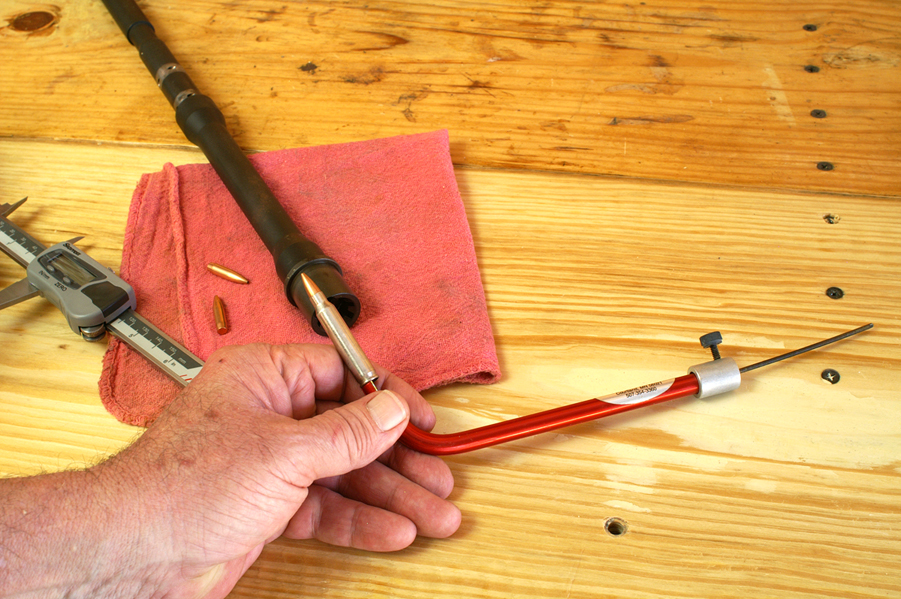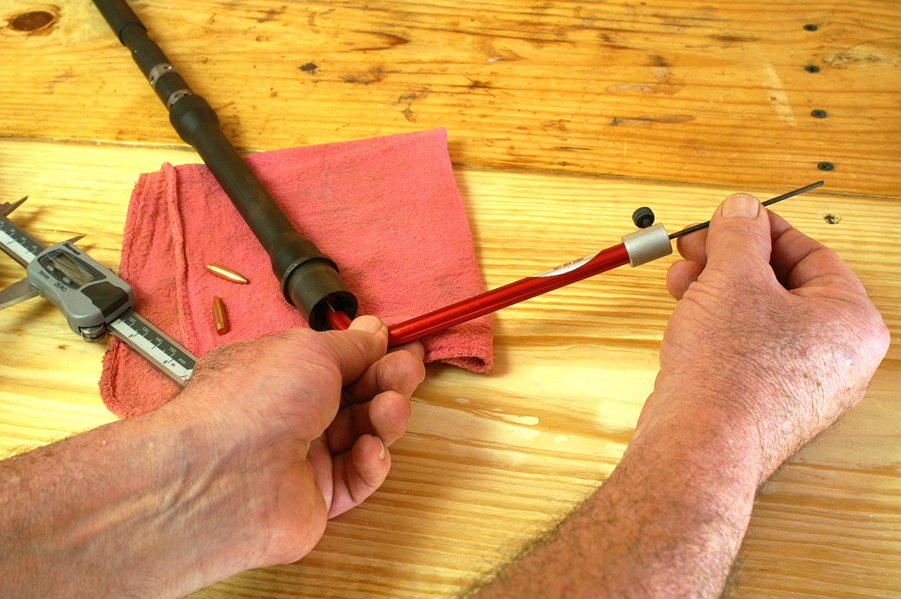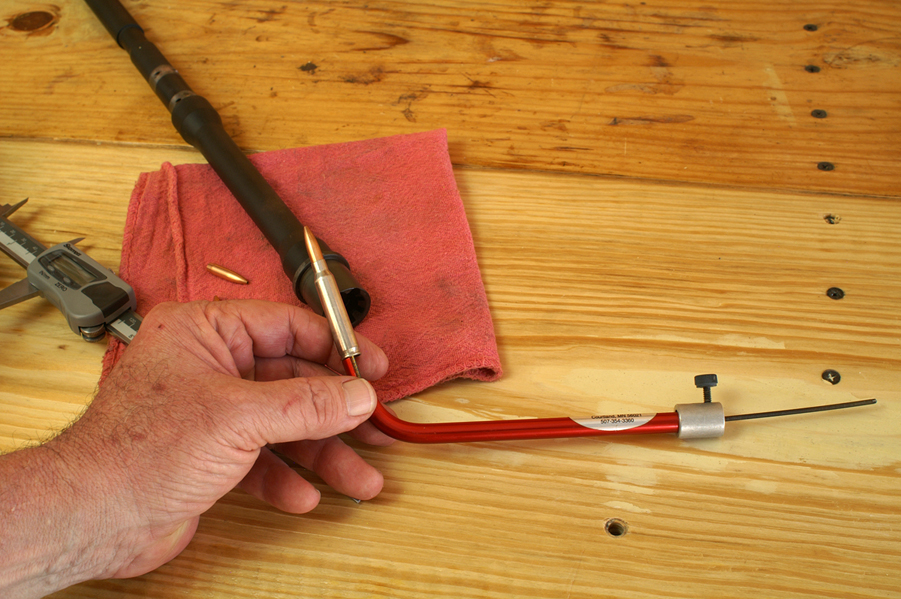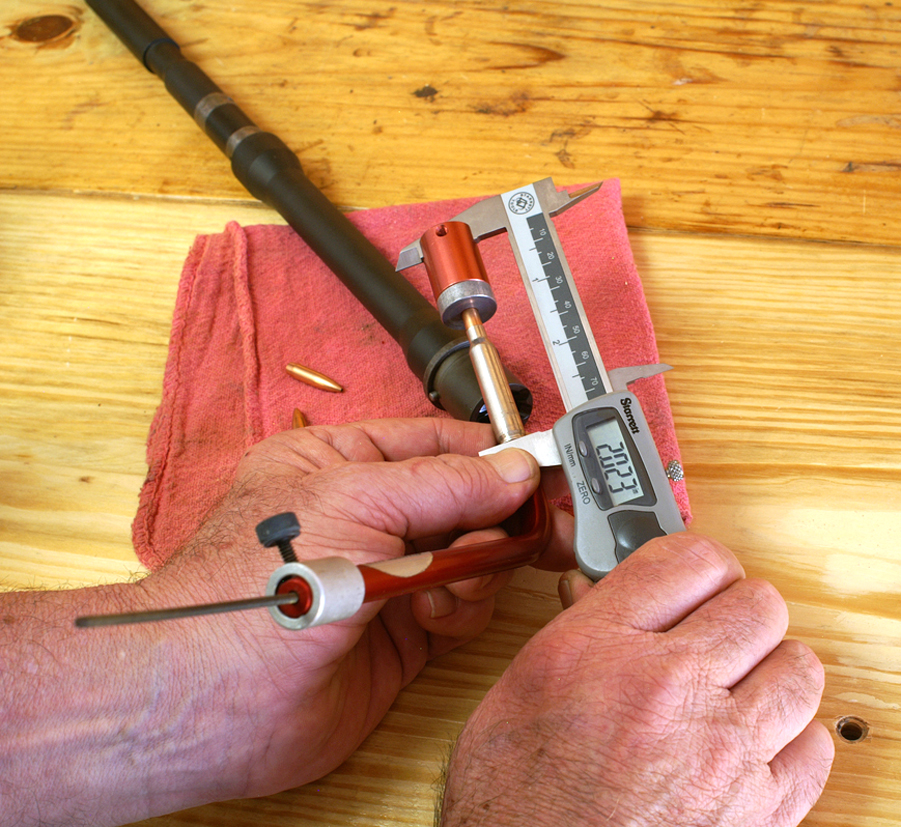The following is a specially-adapted excerpt from the book Top Grade Ammo, by Glen Zediker. Visit ZedikerPublishing.com or BuyZedikerBooks.com for more.
by Glen Zediker
Since I’m focusing on bullets for the next few times, I’ll say some more about the relationships of bullets and barrels.
Barrels have two diameters: groove and land. The groove diameter is the caliber size (within, usually, 0.0005 inches); the land diameter is smaller than that, usually about 0.0050 smaller, or a little more. That means that the first point of contact the bullet makes inside the barrel will be the lands. Learning where this point is can be a valuable thing.

We talked here about the essential forms a bullet ogive or nosecone can take, that some are more or less rounded or blunt, and also the gradual curve of a tangent-style ogive versus the more “spikey” secant style.
Usually (almost always) the nearer to the lands a bullet is the better the accuracy. “Jump” is the distance a bullet has to travel prior to engaging the lands. Different profiles will net different amounts of jump, and that led to my recommendation of a tangent-style bullet with no more than an 8-caliber ogive to give better results when it’s loaded to fit into a box magazine. Such a profile more easily enters the rifling and will have a longer bearing area (both mean less disturbance and a smoother trip through the bore).
There’s a valuable tool that will let you determine the relationship between your barrel and your bullet, which varies from barrel to barrel and bullet to bullet. Originally conceived by Tom Peterson of Stoney Point, it’s now offered through Hornady as the LNL O.A.L. Gauge.

The purpose of this tool is to show the overall cartridge length that has a bullet touching the lands. To get the most from this determination requires another gage, a bullet length comparator. What that does is measure the length of a bullet in a way that avoids the bullet tip coming into the equation. Especially in match-style hollowpoints, bullet tips are inconsistent. I’ve seen as much as 0.020 inches difference in some brands measuring base-to-tip in a box of 100. Closed-nose bullets, not so much, but they’re not perfect either.
There’s an opening in a comparator that comes to rest at a point along the bullet ogive, excluding the tip entirely. The diameter of the comparator opening may or may not coincide with land diameter, but it’s usually close. That doesn’t matter though. The combination of tools provides a pretty accurate picture. Of course, comparator-measured lengths won’t correspond in any way to tip-to-base lengths, but they provide a way to, as its name implies, compare different bullets. It’s the comparison, the net, that matters.
Use this tool set to determine the overall length that touches the lands, and then use the comparator afterward to determine the amount of difference when the bullets are seated to fit into a box magazine. Write it all down and we’ll talk more about making use of it next time…













